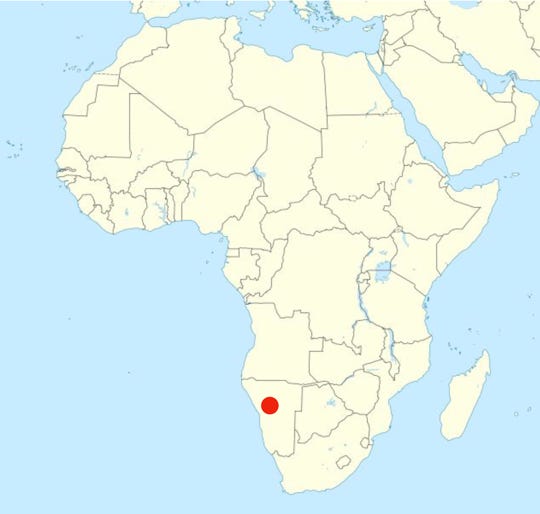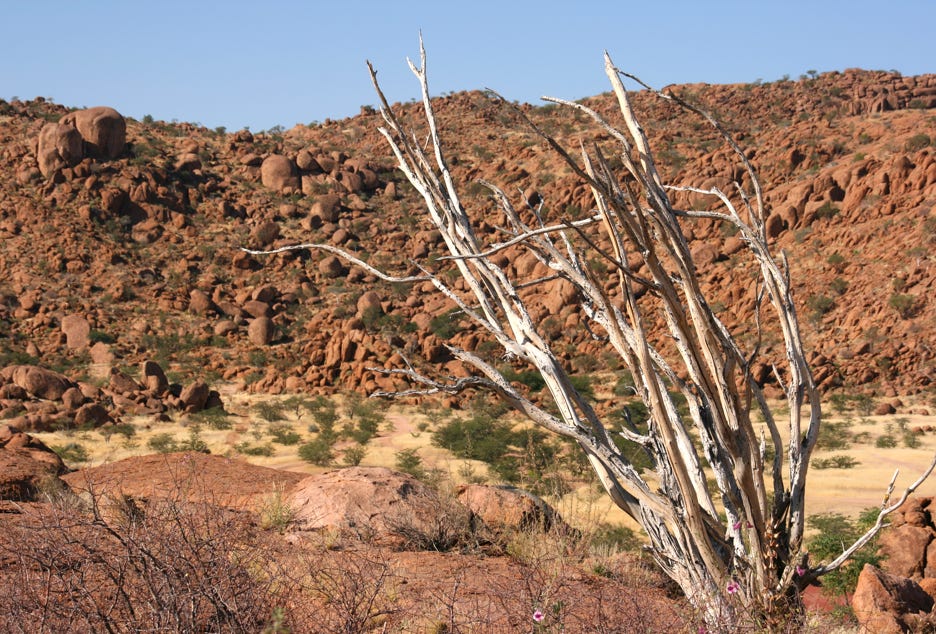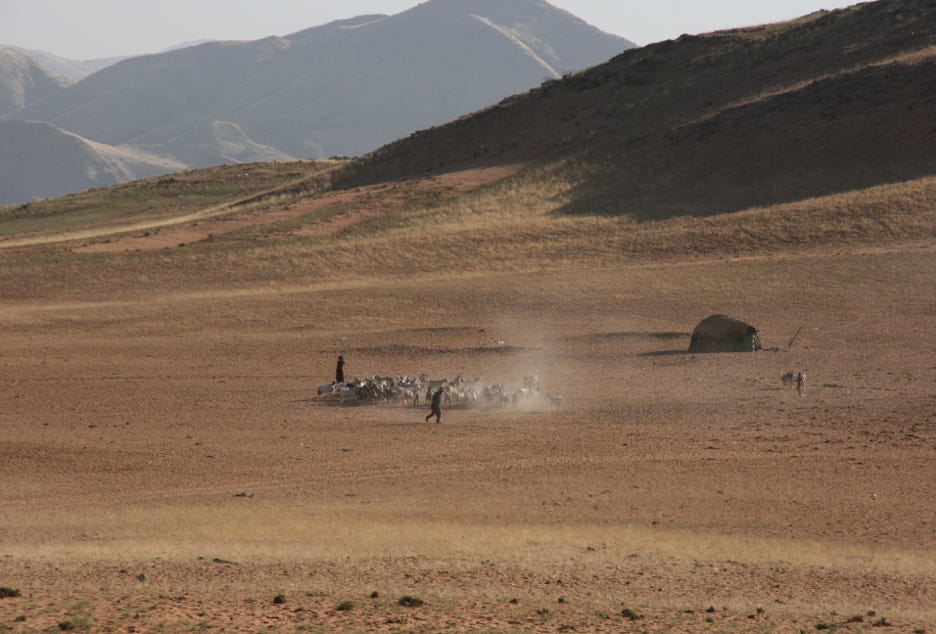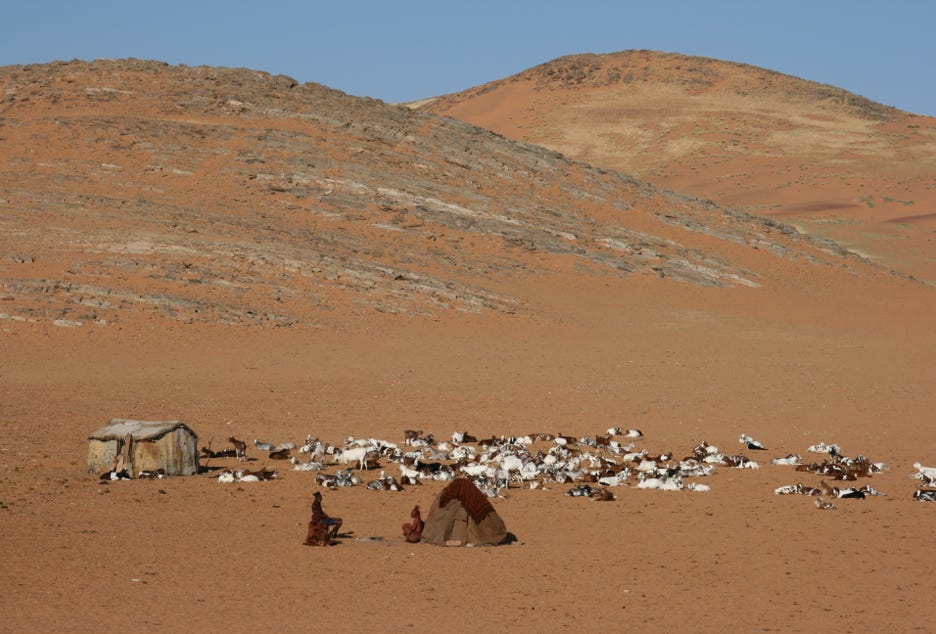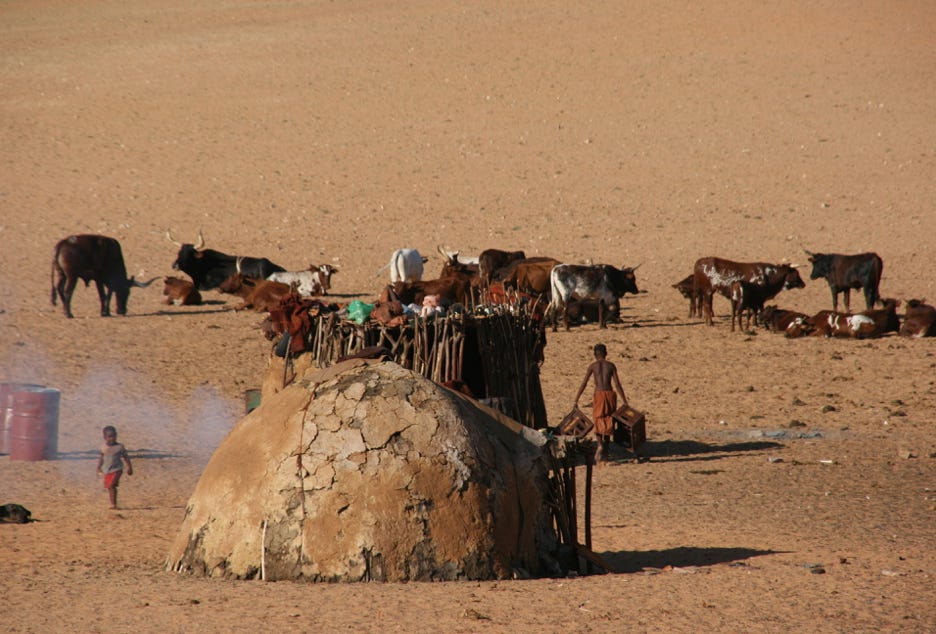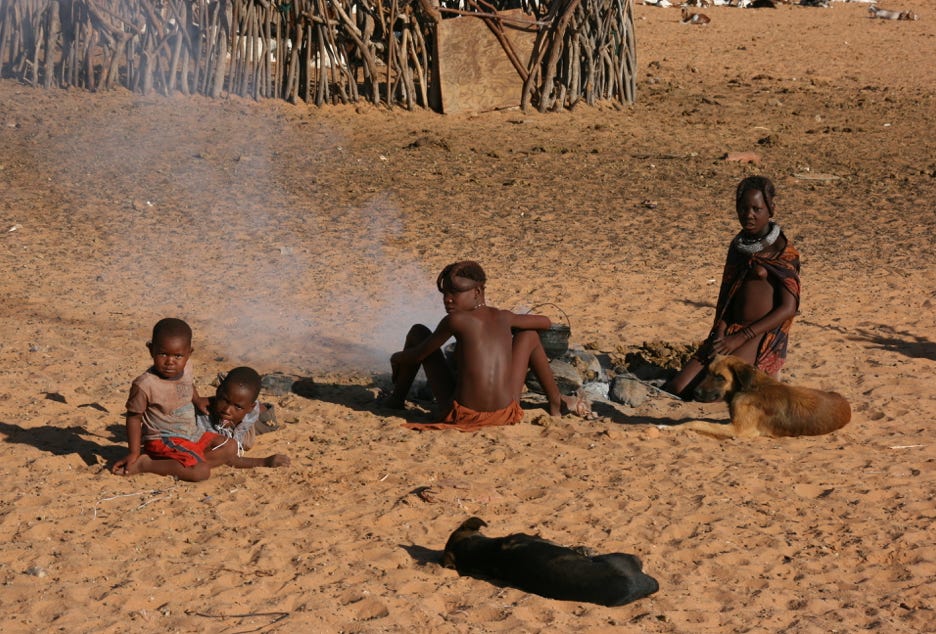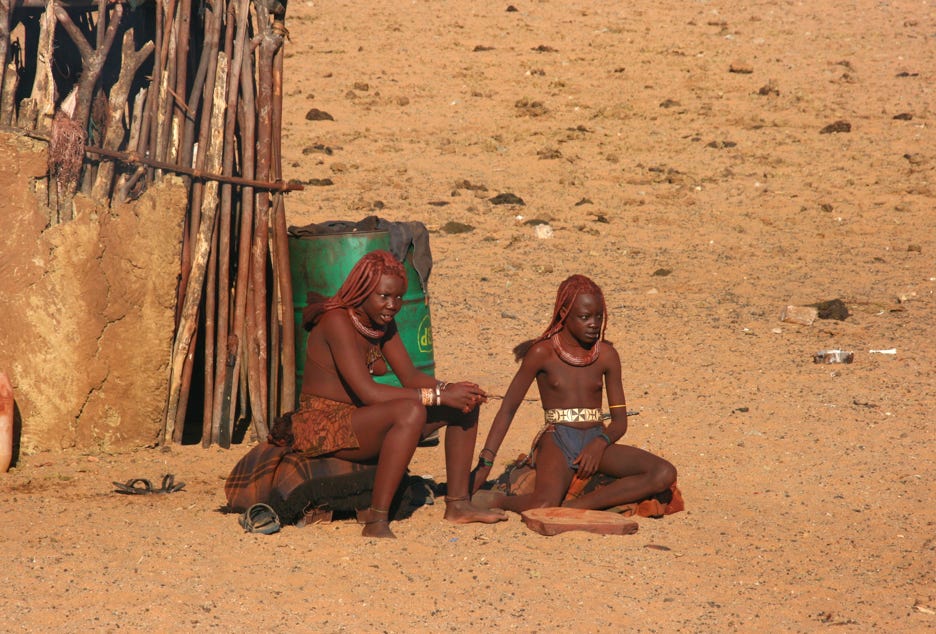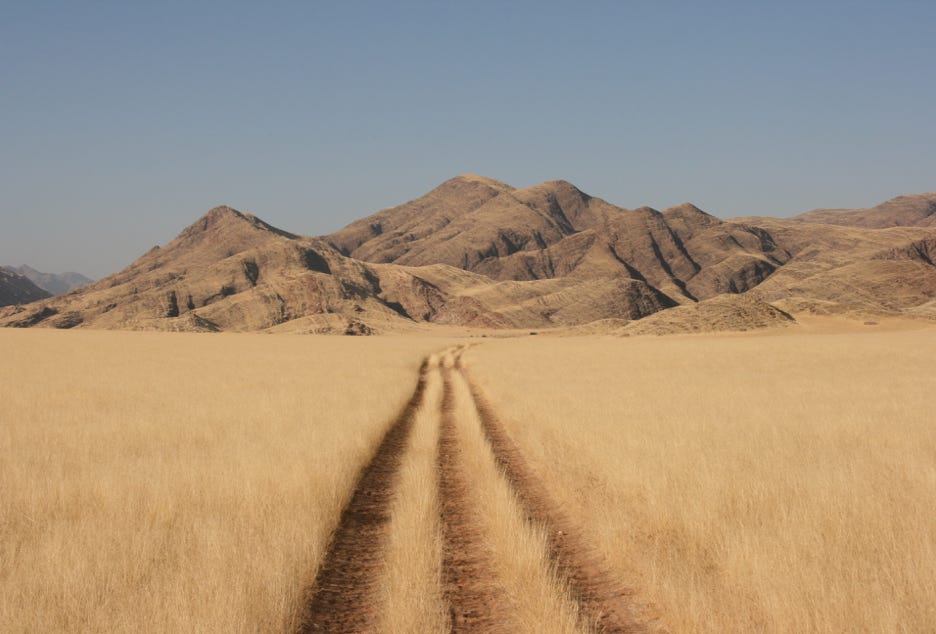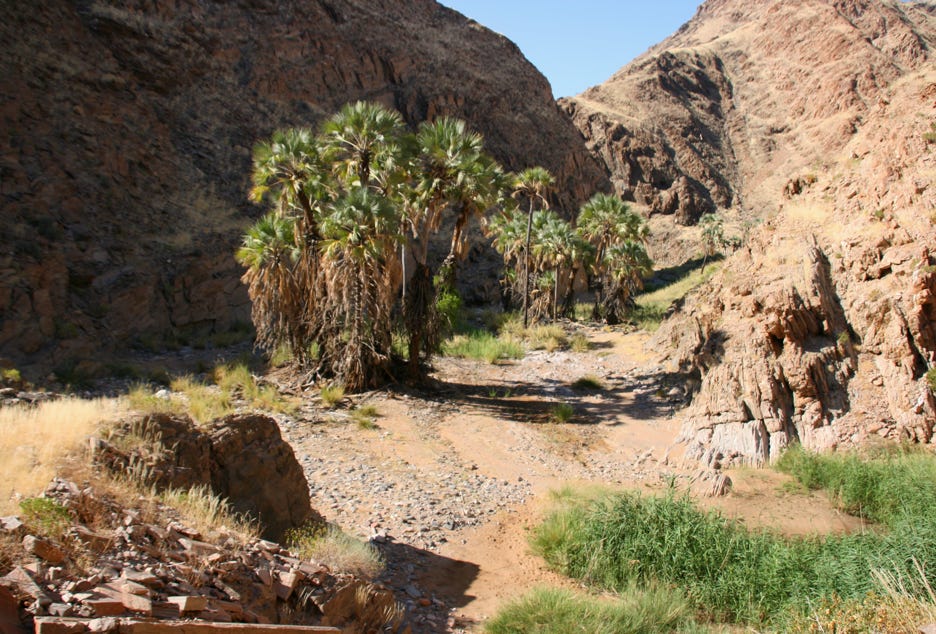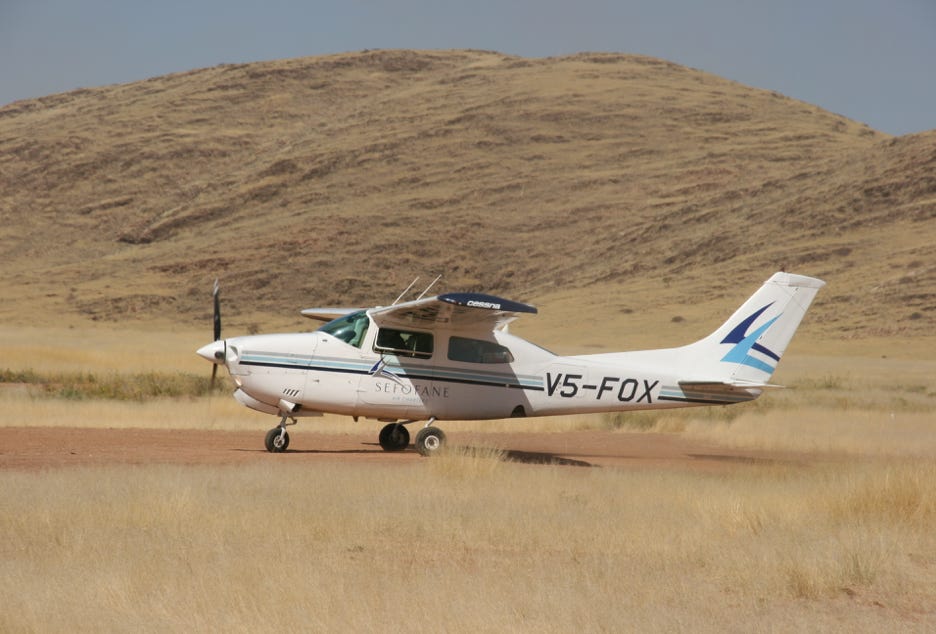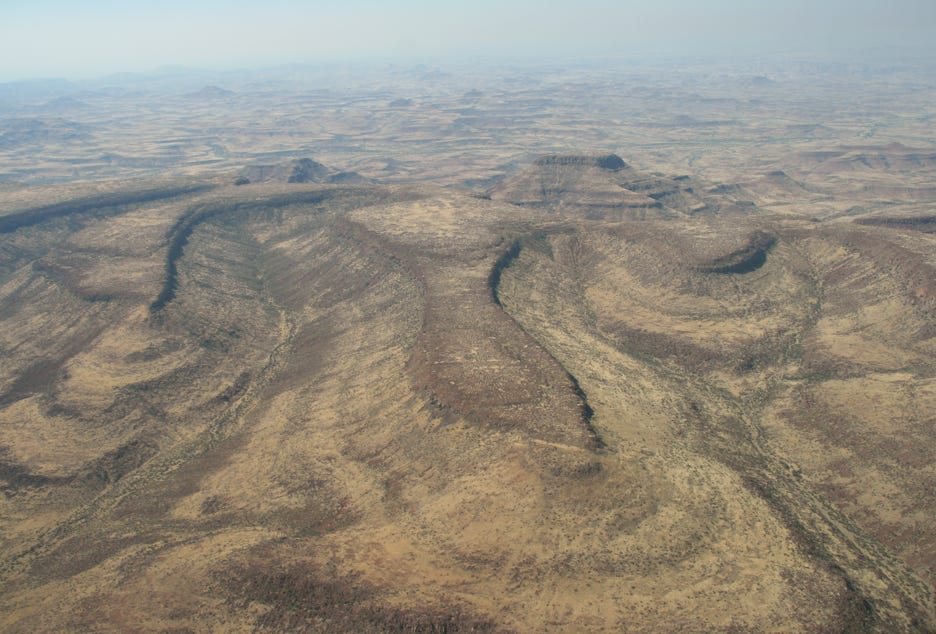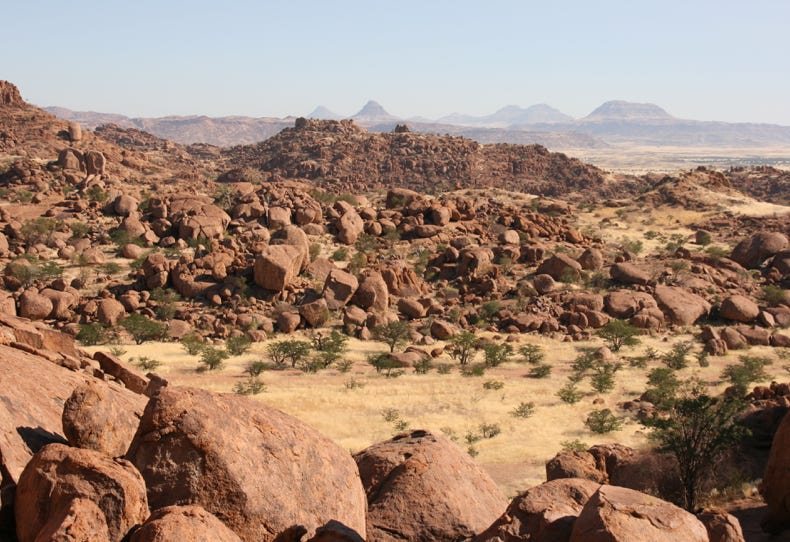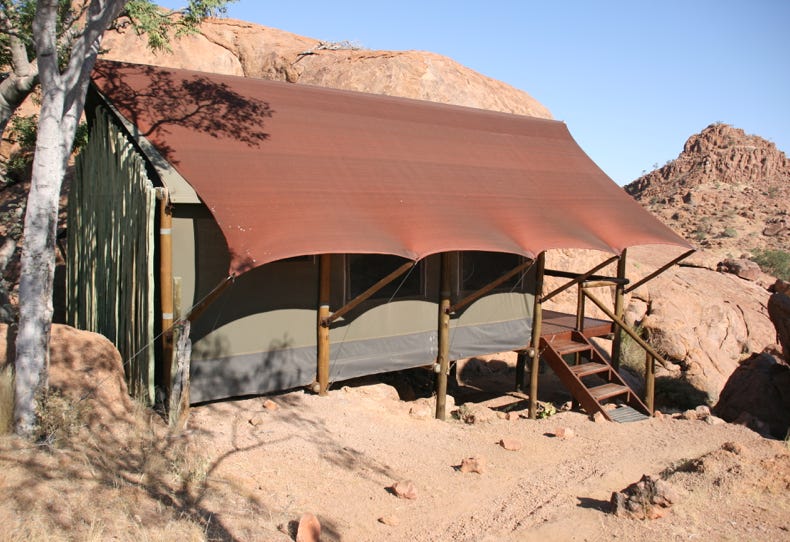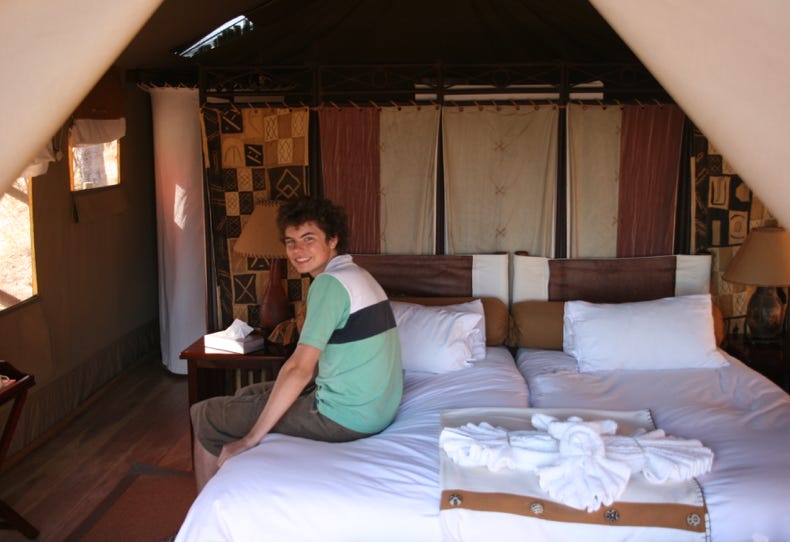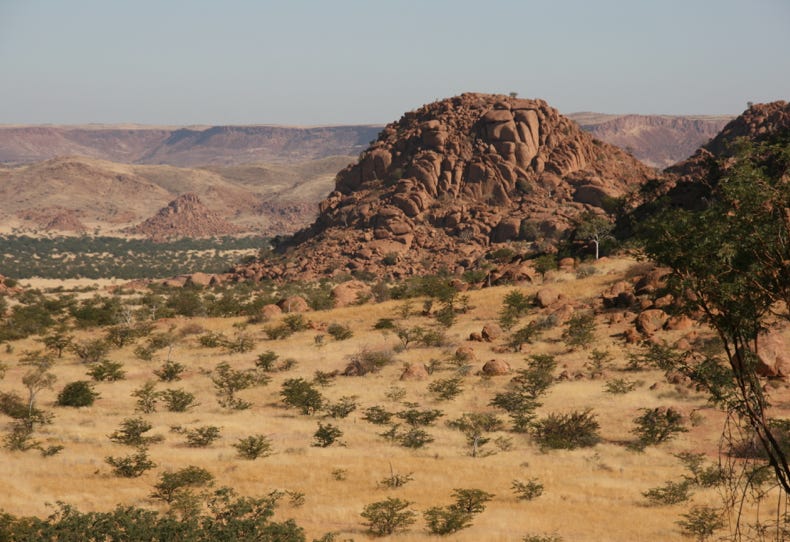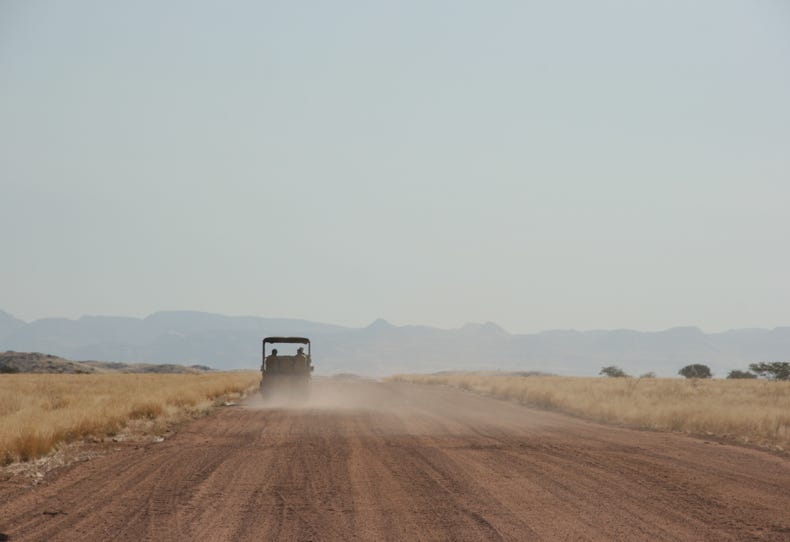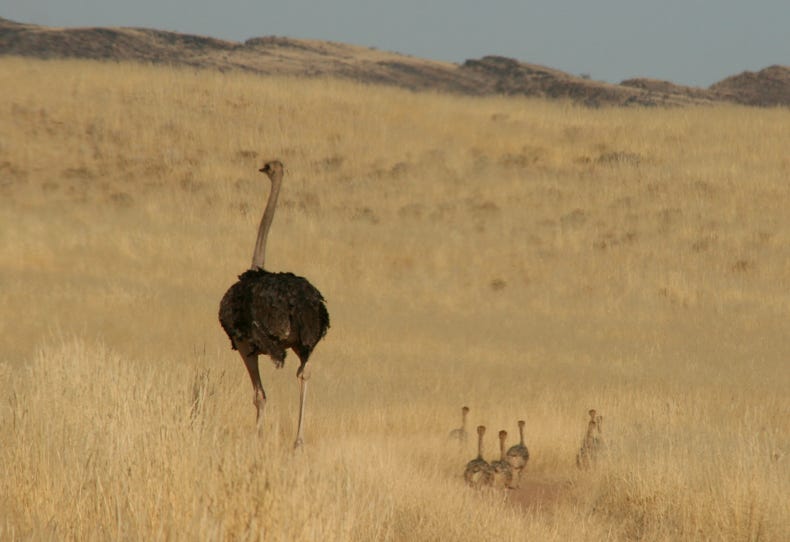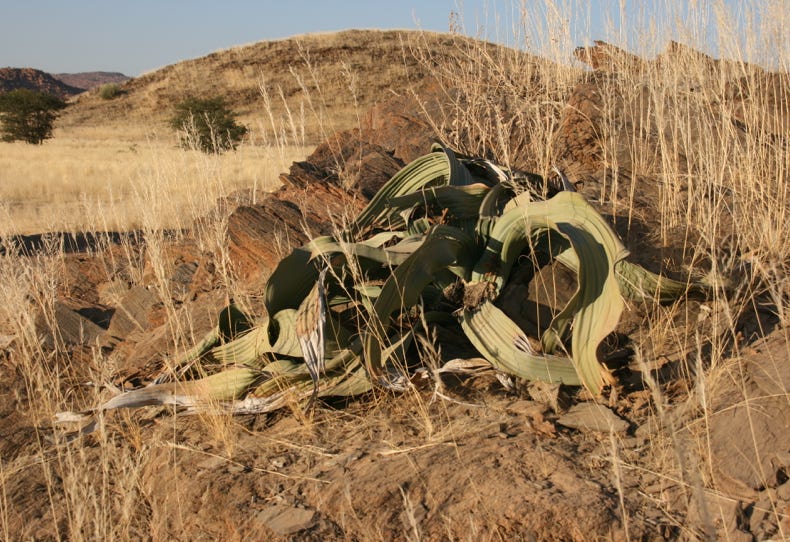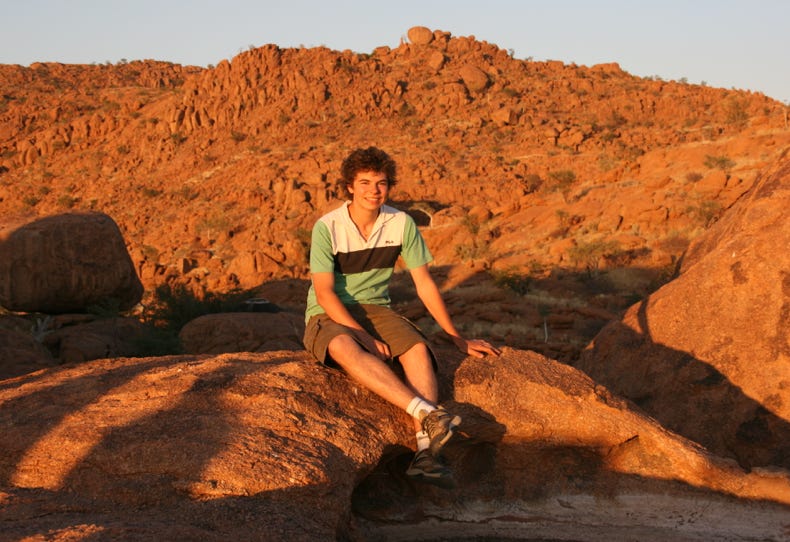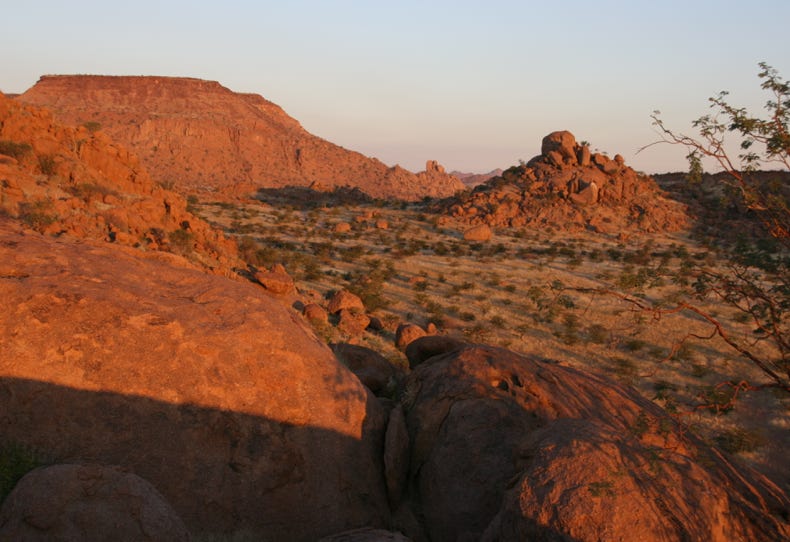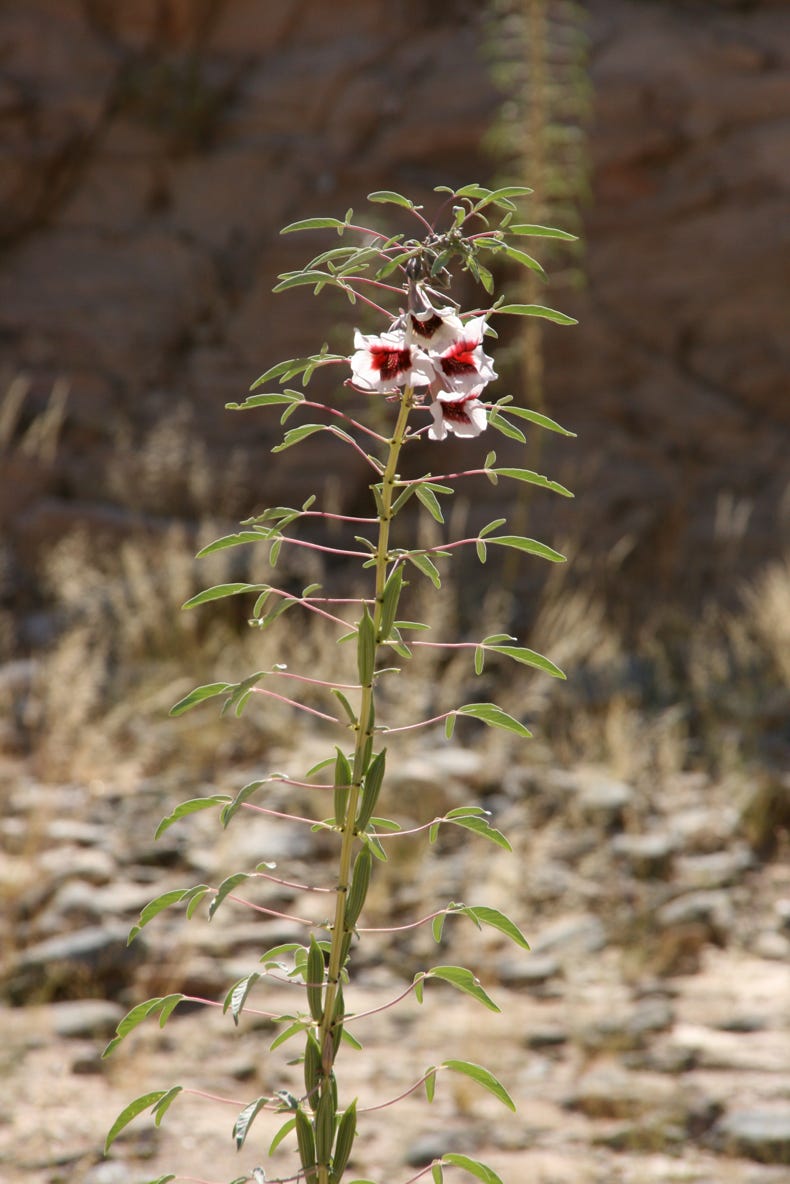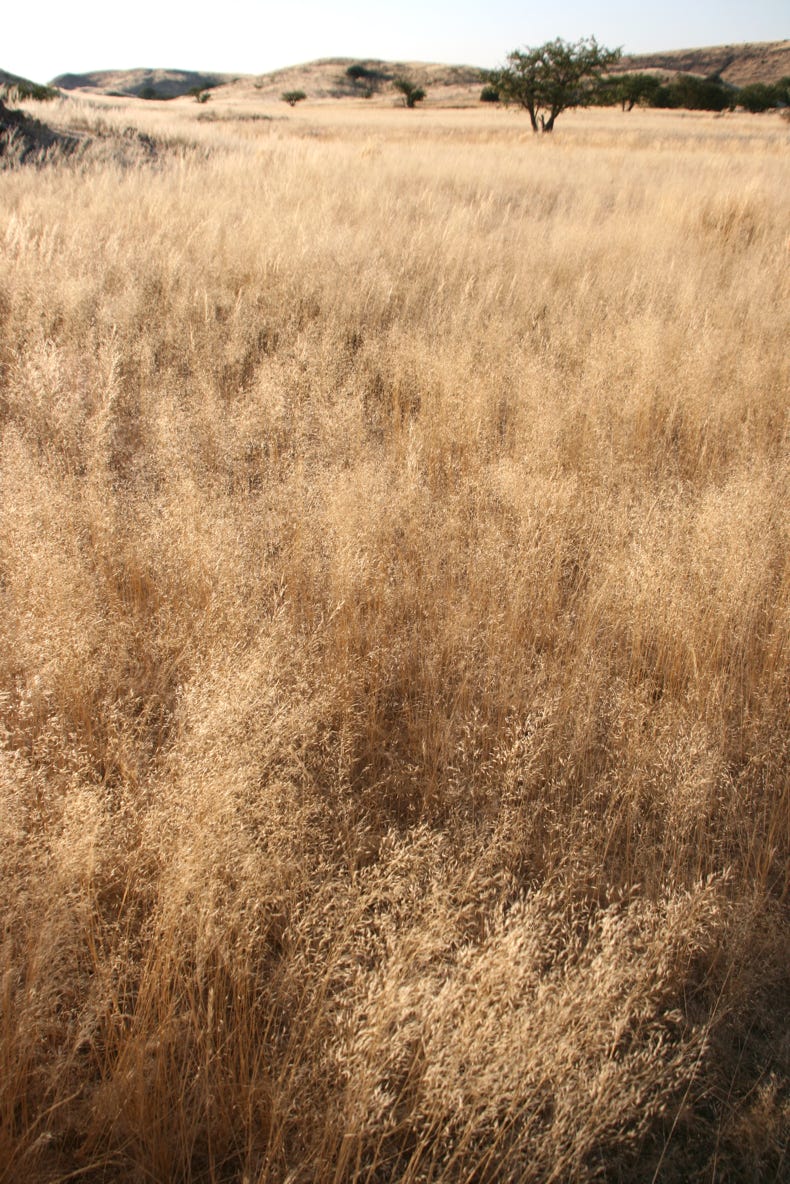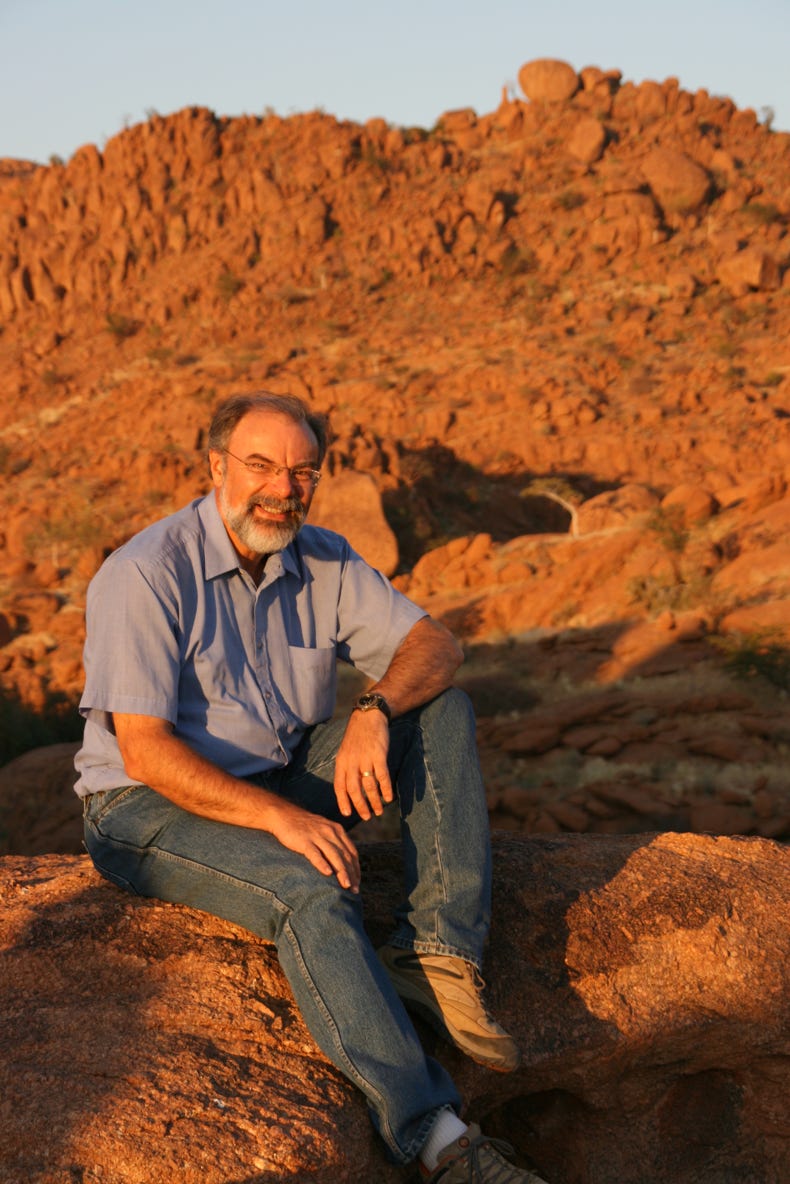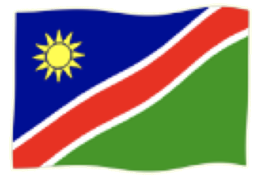

It was just 9 degrees at 6:00 am when we woke this morning beside the Kunene River. It was cold, but with the stunning scenery we were experiencing, it didn’t matter. Our flight to Twyfelfontein was due to depart at 10:45 am, which is why we had a bit of a sleep-in this morning. Like yesterday, tea was brought to our room - it was a small gesture that made a big difference in how we felt at the start of the day.
We packed bags ready for our departure and then had breakfast at 7:00 am; like all meals at our campsite beside the Kunene River, it was great. We set off to the airstrip at Hartmann Valley at a little after 7:45 am in a 4WD Land Rover; this departure time was well before we needed to leave if we were driving directly to the airstrip, but it was early enough to give us time to take in some more of the spectacular scenery of this very special area en route.
We made two stops on the way to the airstrip. The first stop was at the Himba encampment that we had visited yesterday. The reason for visiting again was to see the encampment with all the cattle and goats present, and therefore with all the people present also. During the day, the men take the cattle out to graze, while the children (both boys and girls) take the goats out to graze. This repeat visit really brought alive many of the things we had heard about yesterday but had not seen. To be frank, the visit yesterday was a bit dead, with just a few (mainly older) family members present and no animals to be seen, whereas this morning’s visit placed everything into context because Himba culture is centred on the raising of their livestock.
Our second stop was at a beautiful secluded oasis on the Lion River. This tributary of the Kunene River is named because it was traditionally a place where lions gathered to drink and to hunt for prey that had come to drink the water in the river. The presence of the lions was the reason that several nearby Himba encampments had been abandoned, and we stopped on the way to see the remains of these abandoned settlements. Lions have not been seen at the oasis for about seven years, although with several recent very good wet seasons, there are reports that the lions are starting the process of migrating back towards the oasis. Luckily, or unluckily depending on your perspective, we didn’t see any lions or lion tracks this morning, but we did get to explore this superb oasis in the midst of the surrounding desert, with several types of plant and animal life (including wasp larvae that never mature into wasps) and evidence of porcupine habitation (lots of spikes lying around). We stayed exploring Lion River oasis for almost an hour, and the longer we stayed the more we came to understand the unique ecosystem and physical processes operating there.
We reached the Hartmann Valley airstrip about 20 minutes before our plane arrived. With a total absence of security checks (or buildings, or personnel, or even a sealed runway), this timing was more than adequate. Our plane landed, disgorged its two passengers and cargo, took on Andrew and me as the replacement passengers, and then we took off for the one and a half hour flight to Twyfelfontein.
The scenery on the flight was like flying through a superbly illustrated textbook on the landforms of arid terrains. Just about every arid landform imaginable could be seen with perfect examples in copious quantities. Suffice to say it was a geographical and photographic delight.
We arrived in Twyfelfontein ats about 12:30 pm, where we were met by Paolo, our driver for the next few days. Paolo was born in Angola, but with various conflicts his family moved to Zimbabwe and then later to Namibia. He looked Portuguese, but having learned English in Zimbabwe, sounded (to me) South African (because my untrained ears can’t distinguish Zimbabwean accents from South African). Having unloaded our baggage from the plane and into the 4WD, we drove to our campsite, the Mowani Mountain Camp.
The accommodation at Mowani is in tents that are permanently erected, set among the huge weathered granite boulders that make up the spectacular landscape of the area (see top photo). The accommodation was certainly smaller and more basic than we had enjoyed at the Kunene River, but it was more than adequate and very comfortable, and one of the highlights was the spectacular view from the front of our tent (the photo directly above shows the grand view that we encountered as we stepped out through the flaps at the front of our tent).
After loading our things into the tent, we had a great lunch and then headed off in search of an elephant herd that our driver had received reports was in the area. Actually, it was all a bit strange. As we drove along rough dirt roads, along dry river beds, across grasslands and overland through scrub - for 3 hours - the driver explained that he had very bad luck in finding elephants, as he had been trying for the past two days without success, and had even driven within 200 metres of a herd of elephants yesterday without seeing them. His bragging about his inability to find elephants did little to inspire confidence with either Andrew of myself – but it did prepare us well for the outcome of our three hours of searching; we didn’t find the herd of 26 elephants that we were told was in the area. That made three days in a row that our driver had searched for the elephants without success.
Actually, although neither Andrew nor I are experts in tracking elephants, we would have probably taken a different approach to our guide. When we were on the dirt roads or driving along the river bed, we saw quite a lot of fresh elephant tracks, easily recognisable by their wide pad-like appearance. We could see them going in certain directions, but in every case the driver had “a better idea” or a “feeling that they were elsewhere”, and took us in entirely different directions accordingly. At one time, he agreed the elephant tracks were fresh, but didn’t want to go in that direction because the road was extremely dusty – he seemed much more concerned to keep his car clean than to find the elephants. Yes, Andrew and I were somewhat underwhelmed by the astuteness of his tracking skills. However, to be fair, he has a damaged eye, and although he can spot many things well at a distance. he often misses things that are right next to the road. Still, good eyesight and a good sense of direction would seem like useful skills for a driver/guide to have.
We returned to our campsite, where the other campers were gathering on the top of a large granite boulder to watch the sunset. I was pleased for my fellow campers that most of them had seen the elephants during the day at an intersection that we had passed through three or four times – those times all being bare of elephants. Nonetheless, we did get to see some interesting wildlife, notably a pair of ostriches with some young hatchlings in tow, some secretary birds, and a Welwitschis, which is a strange two-leafed desert plant that derives most of its moisture from dew and which can survive for up to 2000 years.
Our driver was very excited to show us something called the “Wonder Hole” that local people knew about but only a select few visitors ever got to see. It was reported to be a deep hole in the rocks, so deep that when a stone was thrown in, it could be heard rattling its way down into the subterranean depths. We were told that no-one knew how this strange, deep hole had formed.
When we got there, we found it was a fairly average sink hole of the kind that commonly forms as water dissolves limestone (which was the rock type in which the ‘Wonder Hole’ had formed). I explained to the driver that the Wonder Hole was a fairly common feature of limestone landscapes, and described its formation to him. Andrew later said I had been very cruel to dispel the magic of the Wonder Hole to the driver by explaining how this fairly common feature had been formed. As an educator, I simply felt I had a duty to perform, and I performed it. (I later found out that the Wonder Hole is mentioned as a site on page 296 in the Lonely Planet Guide to Namibia, where it is correctly identified as a sinkhole. I decided that as a gesture of sensitivity to the driver, I would not tell him that *his* special place is mentioned in a tour guide).
Dinner this evening was at the campsite, and it was delicious. Both Andrew and I had kudu in mushroom sauce, followed by a malva slice with sauce made from wild fruit. We ate with our driver who told us that he was determined that after three days of failing to find the elephants, we should all rise as early as possible tomorrow morning so that we could set off at 7:00 am and have another try. He was determined that he would not fail four days in a row.
Consequently, my alarm has been set for 5:30 am. I can hardly wait...........
